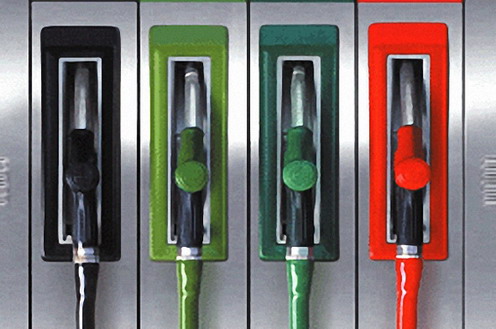This represents a reduction of 0.6% over November's figure, due to the most volatile components of the CPI, especially energy products. Compared with the previous month, in December the general CPI fell by 0.6%, versus the 0.1% increase posted in the same month of 2013. After this result, the annual average CPI rate for 2014 stands at -0.15%, compared with a positive 1.4% in 2013.
In December, energy product prices were down by a year-on-year -8.5%, over five points more than the previous month (-3.2%). This greater decrease was solely due to heating and motor fuels, which posted a 7.3% year-on-year decline to 11.8%, in line with the sharp drop in oil prices. Conversely, the annual rate of electricity tariff went up by half a point to 0.8%, following a month-on-month increase of 0.5%.
The year-on-year rate of change in the price of unprocessed foods fell by 1.6 points in December to -0.4%. This moderation was due to the sharp drop in fresh legume and vegetable prices (resulting from a base effect) and due to other items such as crustaceans and molluscs, together with certain meats, including beef and pork.
Core inflation (excluding the most volatile components of the CPI, fresh food and energy) went up by 0.1% in December, thereby zeroing out. This acceleration is due to NEIGs (non-energy industrial goods) and services, up by an annual 0.1% to -0.2% and 0.3%, respectively. Processed foods remain unchanged at -0.2%.
Within the group of services, the moderate rise in inflation was due to tourism and the hotel and catering industry, up by a year-on-year 0.8% in November to 1% in December. This acceleration was due, in turn, to the upward trend in organised travel prices, which rose by 4.2%, 1.2 points more than in the previous month, and inter-urban public transport prices, whose annual rate doubled to 1.4%.
NEIG prices increased by a year-on-year 0.1% in December to -0.2%, after holding at -0.3% for three consecutive months. This slight increase is due to higher automobile prices and, to a lesser extent, to higher prices of medicines and therapeutic material. Processed foods, including beverages and tobacco, posted an annual rate in December of -0.2%, the same as for the four previous months. This stability can be explained by the upward trend in headings such as cooking oil, mineral water, and soft drinks and fruit juices, which offset the moderation in milk and dairy products, and sugar. The rest of the headings of this group remained largely stable.
In month-on-month terms, the CPI fell by 0.6% in December, compared with a 0.1% increase in the same month of 2013. This drop is due to lower prices of energy products, processed and unprocessed foods and of NEIGs, especially clothing and footwear, partially offset by rising prices of services, especially those of tourism and the hotel and catering industry, and of inter-urban public transport. Unprocessed food prices fell by 0.3% compared with November, due to falling prices of fresh fruit and pork. Prices of processed foods were down slightly, by 0.1%, due to cheaper sugar and alcoholic beverages, offset by more expensive oils and fats.
In December, energy products posted a 4.8% month-on-month reduction as a consequence of a 6.8% drop in solid and liquid fuels, partially offset by a 0.5% rise in the electricity tariff. NEIG prices fell by 0.5% compared with the preceding month as a result of the seasonal drop in clothing and footwear prices (-2%). Meanwhile automobile prices posted a 0.3% month-on-month increase.
Prices of services rose by 0.3% in December on the previous month, largely due to tourism and the hotel and catering industry (1%) and inter-urban public transport (1%). In the tourism and hotel and catering industry, rising organised travel prices (9%) had a marked impact.
Four of the 17 autonomous region posted inflation rates for December in excess of the national average: Catalonia and the Basque Country (both -0.7%), the Balearic Islands (-0.8%) and La Rioja (-0.9%). Galicia posted the same rate as the national average (-1%) while the inflation rates of the rest of the regions were below the average. The lowest rate was posted by Castile-La Mancha, at -1.5%. The annual CPI rate at constant taxes in December stood at -1%, the same as the general CPI, -0.6% lower than the same figure for the previous month.
The INE also published the harmonised CPI (CPIA) for the month of December, which stood at a year-on-year -1.1%, versus -0.5% in the previous month. If we compare this figure with the one estimated by Eurostat for the Eurozone as a whole in December (-0.2%), the inflation differential in Spain's favour is 0.1% higher, at -0.9%.
To sum up, the year-on-year rate of change of the CPI fell in December due to price trends affecting energy products and unprocessed foods, while core inflation rose by 0.1% to zero. Therefore, the purchasing power of salaries in a context of wage restraint continues to improve which, combined with a drop in taxes and job creation, will give a greater boost to both consumption and economic growth. The inflation differential remains positive for Spain when compared with the Eurozone, which is enabling gains in competitiveness and helping drive Spanish exports.





